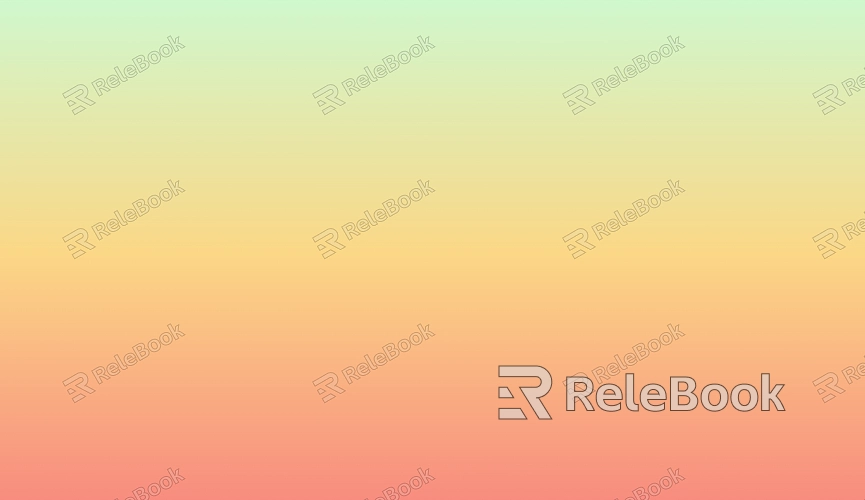How Do You Enable Transparency on Textures in Daz 3D
In 3D modeling and rendering, enabling transparency on textures is essential for creating visually compelling designs. Whether you're crafting characters, building scenes, or presenting products, designers often need to adjust the transparency of certain parts of their models to enhance realism and detail. Daz 3D, a powerful 3D modeling software, offers a straightforward way to achieve complex transparency effects. With the right settings and techniques, you can bring a higher level of authenticity to your designs. However, for beginners or users unfamiliar with Daz 3D, understanding how to enable and properly use texture transparency can be challenging. This article will walk you through the steps of enabling transparency on textures in Daz 3D and offer tips for optimizing your results.

1. Understanding the Role of Transparency Textures
In 3D design, transparency textures—also known as Opacity Maps or Alpha Maps—are used to create semi-transparent or fully transparent effects on specific parts of an object’s surface. These textures are particularly important when creating materials like windows, glass, sheer clothing, or complex hairstyles that need to appear translucent or allow light to pass through. Typically, these transparency maps are black-and-white images where black represents full transparency, white signifies full opacity, and gray is used for partial transparency.
Transparency maps are widely used in many 3D programs, including Maya, Blender, and 3ds Max. In Daz 3D, using transparency maps not only helps make your scenes more realistic but can also reduce the polygon count, improving rendering efficiency. Learning how to enable transparency in Daz 3D will allow you to implement these intricate visual effects seamlessly in your projects.
2. Importing and Applying Transparency Maps
The first step in enabling transparency on textures in Daz 3D is to import the correct texture file. Transparency maps are usually grayscale Alpha Maps, so make sure you have those files ready. Here’s how to apply them:
Open Daz 3D and select the model to which you want to apply transparency effects.
Navigate to the “Surfaces” panel on the right side of the interface and locate the material zone you want to adjust, such as clothing, skin, or other object surfaces.
In the material settings, find the “Opacity” or “Cutout Opacity” option. This parameter controls the transparency of the selected material.
Click on the texture box next to the opacity setting and choose “Browse” to import your Alpha Map file.
Once the texture is imported, the transparency effect will take place. Areas in black will become transparent, while white areas will remain fully opaque. This simple step brings an immediate visual transformation to your model.
3. Adjusting the Strength and Details of Transparency
After applying a transparency map, you may need to fine-tune the transparency’s strength and details based on your project requirements. Daz 3D’s opacity slider allows you to control the transparency level between 0 and 1:
Lowering the value closer to 0 will make the entire material more transparent.
Increasing the value closer to 1 will keep more of the original material opaque.
Additionally, by editing the details of your Alpha Map, you can adjust the transparency in specific areas of the texture. For instance, refining the grayscale levels in the Alpha Map will create gradient transparency, adding depth and subtle variations to the transparency effect.

4. Optimizing Lighting and Rendering Settings
The way transparency textures appear in your scene is directly influenced by lighting and rendering settings. To ensure that your transparency looks natural, pay attention to the following:
Adjust the position and intensity of your light sources to ensure that light interacts properly with the transparent areas of your model.
In the render settings, enable the “Refraction” option. This is particularly important for transparent materials like glass or liquids, where light bending can enhance realism.
Check the “Shadow” settings. Transparent areas can sometimes cast illogical shadows. You can control whether or not shadows are cast by these areas by adjusting the “Cast Shadows” parameter in the material panel.
5. Testing and Refining the Effect
Testing and refining are crucial for achieving the best transparency effects in Daz 3D. After each step, use the software’s real-time preview to assess how the transparency appears under different lighting conditions and from various angles. This ensures the transparency map works as intended across all parts of your scene.
For example, if you’re creating hair, testing different light angles will help you confirm whether the transparent strands look natural. Similarly, when dealing with glass or water, testing different refraction and reflection settings can significantly enhance the overall visual quality.
6. Iterating and Fine-Tuning
Creating a satisfying transparency effect in Daz 3D often requires multiple iterations and adjustments. Factors like the project’s scene, lighting conditions, and material types all impact the transparency’s appearance. You can fine-tune the Alpha Map details, adjust material parameters, and experiment with different render settings to continuously improve the final transparency effect.
By following these steps, you can effectively enable and optimize texture transparency in Daz 3D. Mastering transparency maps will not only enhance the quality of your designs but also add a higher level of realism and depth to your renders. If you're looking for more high-quality 3D models and texture resources, visit Relebook. Relebook offers a wide range of 3D assets to help you achieve exceptional visual results in your projects.

